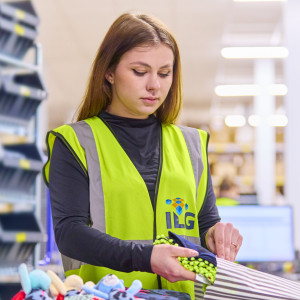Why Fast-Growing Brands Fail at Scale and How Logistics Becomes the Bottleneck


Growth is thrilling for fast-growing E-Commerce brands. Yet beneath the excitement often lies a silent crisis: logistics cannot keep pace. Warehouses reach capacity, inventory becomes disordered, order accuracy drops, and customer experience suffers, usually just when brands are ramping for peak or a high-impact launch.
In the UK, E-Commerce growth is slowing as the market matures, with forecasts putting sales growth at just 3.6 per cent in 2025 before a modest rebound in 2026*. Still, the market remains sizeable: projections estimate the UK E-Commerce sector will reach USD 265 billion in 2025 with a healthy compound annual growth rate of more than 22 per cent through to 2030*,. The opportunity is considerable, if brands can master logistics before chaos hits.
Operational tipping points emerge when brands attempt to manage surging order volumes using legacy processes. Practices that sufficed at GBP1 million in turnover buckle at GBP10 million, and collapse around the GBP100 million mark. Order errors climb, forecasting fails, and inventory becomes invisible.
Without recognising this pivotal shift, brands risk losing both revenue and reputation. The most common mistakes are familiar. Brands cling to manual operations amidst rising volumes, relying on outdated paper pick lists or staff-intensive packing.
Forecasting is often incomplete, resulting in costly over-stocking or damaging stockouts. Warehouses not designed for scale crumble under pressure, and when peak season arrives, many discover too late that they lack the carrier capacity to cope. These missteps are rarely the result of weak ambition.
They reflect businesses focusing on brand and product while under-investing in operations. Failed deliveries already cost UK retailers an estimated GBP1.6 billion annually, with each missed delivery averaging GBP11.60 in lost revenue and recovery costs*. The good news is that logistics can be turned from a barrier into an enabler.
Brands such as Charlotte Tilbury have shown how fulfilment, when elevated, strengthens the customer experience. As their team explained in a recent case study: "Our total fulfilment support with ILG has enabled the Charlotte Tilbury brand to establish itself as a major player in the beauty space. From innovative ideas for bespoke packaging to high-end customer support, we use our clean re-work facility for packing high volumes of products into gift sets for peak times.
We also offer optional engraving on products such as cream pot lids, powder cases and makeup brushes for creation of unique, personal gifts." This perspective captures why operational resilience is not a technical issue but a brand-critical one. Scamp & Dude, a purpose led fashion brand, provides a similar lesson. By building robust fulfilment processes into their growth plan, the company safeguarded reputation and customer loyalty even during periods of rapid change.
These examples highlight that scaling successfully requires logistics to be treated as a core part of the brand experience rather than a back-end function. Poorly executed fulfilment does not just delay deliveries; it undermines customer trust. Avoiding the so-called 'ops crush' depends on strategic design.
Optimising warehouse space and investing in automation increases throughput. Building agility into services ensures that personalisation, kitting and returns can be delivered at speed. Carrier flexibility prevents bottlenecks, while real-time data provides visibility to forecast accurately and adapt quickly.
Strong security and operational discipline then add the resilience to protect stock and brand equity. Ultimately, when brands crash at scale, it is rarely because of poor products or weak marketing. It is because their operations cannot keep up.
Conversely, when logistics is understood as a growth enabler, it becomes the runway to broader horizons. For founders and retail leaders, the lesson is simple: logistics strategy is not a distraction from brand building, it is the foundation that makes sustainable growth possible. By Andy Hunt, Marketing Director, International Logistics Group (ILG)
Sources: www.ilguk.com https://www.emarketer.com/content/uk-ecommerce-forecast-2025 https://www.mordorintelligence.com/industry-reports/united-kingdom-ecommerce-market
https://pegasuscouriers.co.uk/2025/08/cost-of-failed-deliveries
Transport & Logistics - Driving The Industry Forward